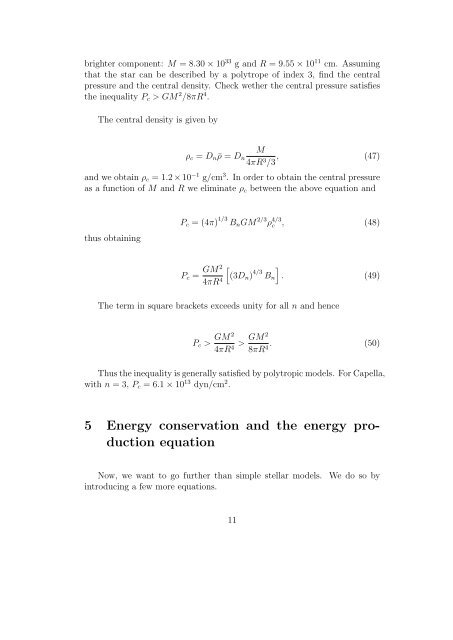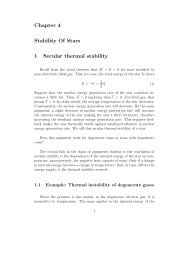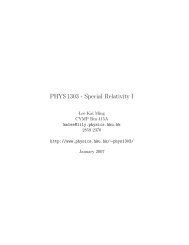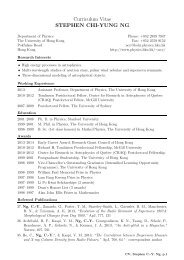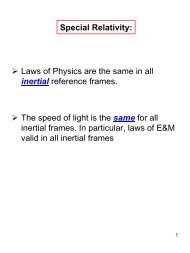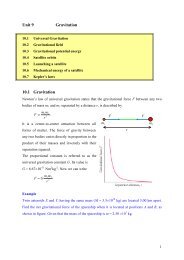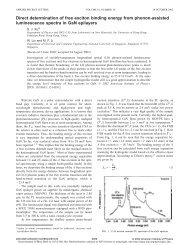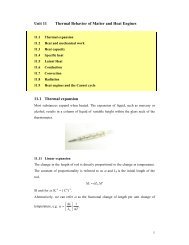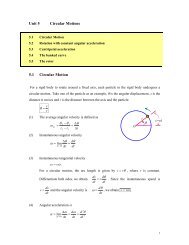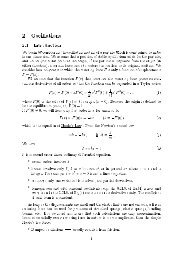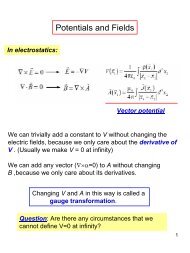Chapter 2 Stellar Structure Equations 1 Mass conservation equation
Chapter 2 Stellar Structure Equations 1 Mass conservation equation
Chapter 2 Stellar Structure Equations 1 Mass conservation equation
Create successful ePaper yourself
Turn your PDF publications into a flip-book with our unique Google optimized e-Paper software.
ighter component: M = 8.30 × 10 33 g and R = 9.55 × 10 11 cm. Assuming<br />
that the star can be described by a polytrope of index 3, find the central<br />
pressure and the central density. Check wether the central pressure satisfies<br />
the inequality P c > GM 2 /8πR 4 .<br />
The central density is given by<br />
M<br />
ρ c = D n ¯ρ = D n<br />
4πR 3 /3 , (47)<br />
and we obtain ρ c = 1.2 × 10 −1 g/cm 3 . In order to obtain the central pressure<br />
as a function of M and R we eliminate ρ c between the above <strong>equation</strong> and<br />
thus obtaining<br />
P c = (4π) 1/3 B n GM 2/3 ρ 4/3<br />
c , (48)<br />
P c = GM 2<br />
4πR 4 [<br />
(3D n ) 4/3 B n<br />
]<br />
. (49)<br />
The term in square brackets exceeds unity for all n and hence<br />
P c > GM 2<br />
4πR 4 > GM 2<br />
8πR 4 . (50)<br />
Thus the inequality is generally satisfied by polytropic models. For Capella,<br />
with n = 3, P c = 6.1 × 10 13 dyn/cm 2 .<br />
5 Energy <strong>conservation</strong> and the energy production<br />
<strong>equation</strong><br />
Now, we want to go further than simple stellar models.<br />
introducing a few more <strong>equation</strong>s.<br />
We do so by<br />
11


